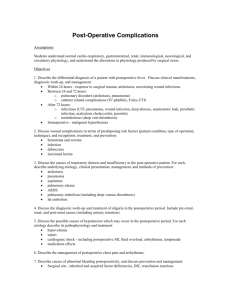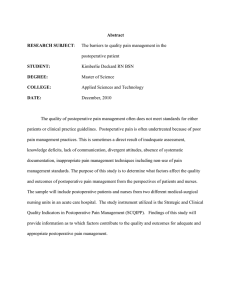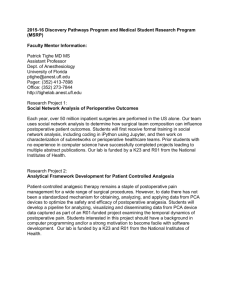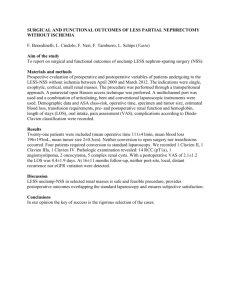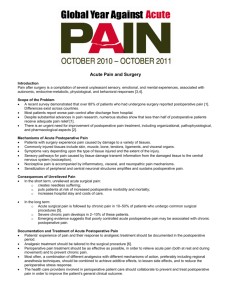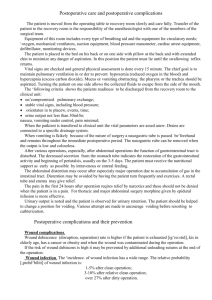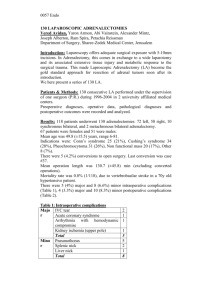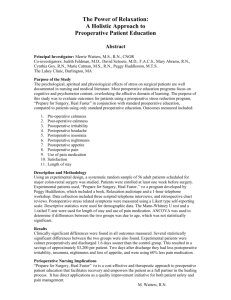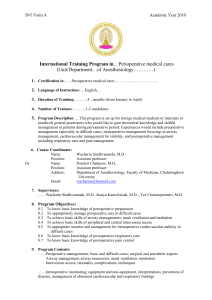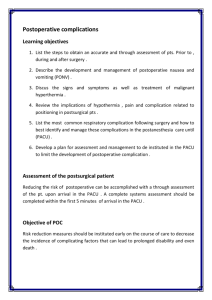Chapter 50 - Postoperative Care
advertisement
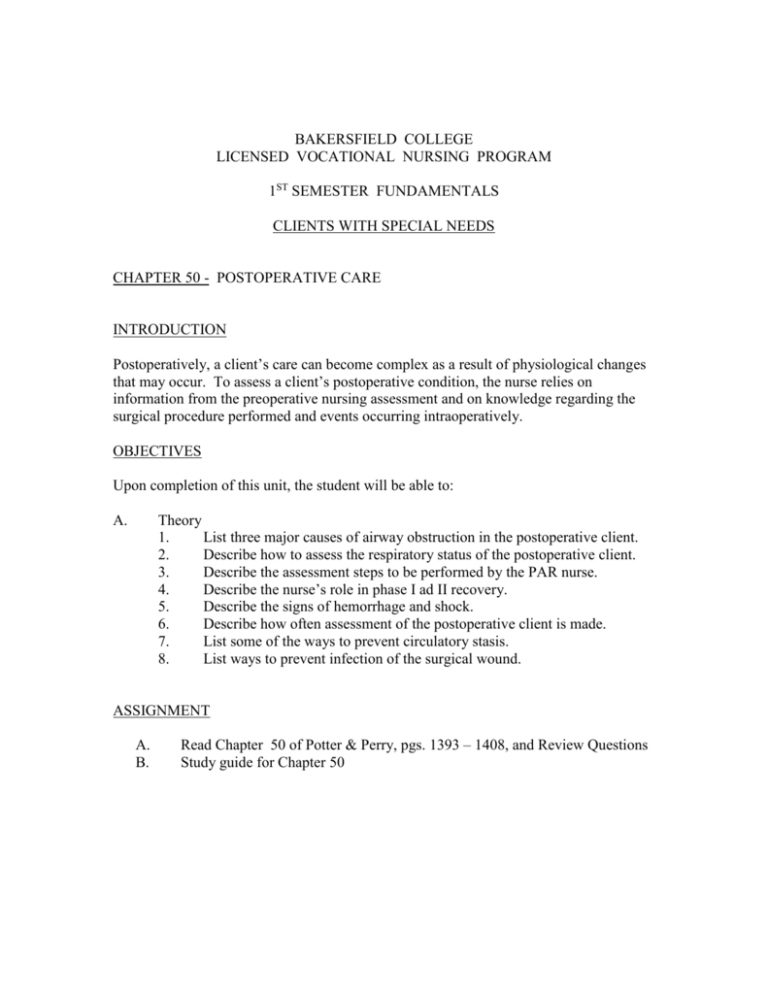
BAKERSFIELD COLLEGE LICENSED VOCATIONAL NURSING PROGRAM 1ST SEMESTER FUNDAMENTALS CLIENTS WITH SPECIAL NEEDS CHAPTER 50 - POSTOPERATIVE CARE INTRODUCTION Postoperatively, a client’s care can become complex as a result of physiological changes that may occur. To assess a client’s postoperative condition, the nurse relies on information from the preoperative nursing assessment and on knowledge regarding the surgical procedure performed and events occurring intraoperatively. OBJECTIVES Upon completion of this unit, the student will be able to: A. Theory 1. List three major causes of airway obstruction in the postoperative client. 2. Describe how to assess the respiratory status of the postoperative client. 3. Describe the assessment steps to be performed by the PAR nurse. 4. Describe the nurse’s role in phase I ad II recovery. 5. Describe the signs of hemorrhage and shock. 6. Describe how often assessment of the postoperative client is made. 7. List some of the ways to prevent circulatory stasis. 8. List ways to prevent infection of the surgical wound. ASSIGNMENT A. B. Read Chapter 50 of Potter & Perry, pgs. 1393 – 1408, and Review Questions Study guide for Chapter 50 Chapter 50 - Postoperative Care Postoperatively a client’s care can become complex as a result of physiological changes that may occur To assess a client's postoperative condition the nurse relies on: information from the preoperative nursing assessment and on knowledge regarding the surgical procedure performed events occurring intraoperatively The anesthesiologist or surgeon usually accompanies the client to the: Recovery room – RR Or the post anesthesia room – PAR Or the Post Anesthesia Care Unit – PACU Assessment includes: Admission time Airway Measurement of vital signs Color of skin Condition of dressing Measurement of body temperature Assessment includes: Level of consciousness Condition of the skin Genitourinary function Monitor IV’s or blood transfusions Perception of pain Assess for hemorrhage and shock Recovery in Ambulatory Surgery Phase I Recovery Needs close monitoring Average time is 1 hour Phase II Recovery May be in medical recliner chair For clients who have undergone minor surgery Environment is designed to promote comfort and well-being Discharge from the Recovery Room When the client is stable he is discharged from the recovery room To home To the ambulatory/outpatient unit To the hospital room If client’s condition is poor, may be transferred to the ICU Postoperative Assessment In the hospital room Same physical measurements and observations performed in the recovery room Vital signs and assessments are made: every 15 min X 4 Every 30 min for 1-2 hours Every hour X 4 Then q4h x 24 Nursing Diagnoses For the surgical client Ineffective airway clearance High risk for injury Due to bleeding, falling Impaired tissue integrity Pain High risk for infection Implementation Maintain respiratory function Position, suction, diaphragmatic breathing, incentive spirometry, early ambulation, turn in bed, keep client comfortable Preventing circulatory stasis Antiembolic stockings Pneumatic antiembolic stockings – SCD Avoid positions that put pressure or interrupts blood flow to the extremities Implementation Promote normal elimination and adequate nutrition NPO then progress to liquids Gradually progress diet Monitor for bowel sounds Assess for N/V Promote urinary elimination Check for first voiding (> 30cc/hr) Bladder distention Monitor I&O Implementation Preventing infection Strain on sutures disrupts wound layers Critical time is 24 - 72 hours post-op Infections usually occur 3 – 6 days post-op Takes 15 – 20 days to regain wound strength Achieving rest and comfort Irritations from tubes, dressings, casts Muscular strain from positioning on OR table Determine character of pain Maintaining Self-Concept Provide privacy Maintain client hygiene Prevent drain overflow Maintain pleasant environment Allow opportunities for client discussion Provide opportunities for family discussion
